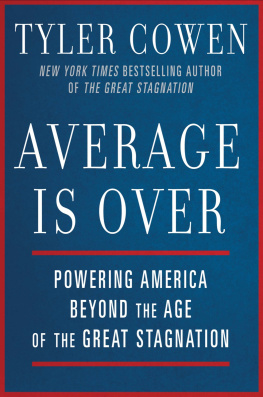Deborah Cowen - The Deadly Life of Logistics: Mapping Violence in Global Trade
Here you can read online Deborah Cowen - The Deadly Life of Logistics: Mapping Violence in Global Trade full text of the book (entire story) in english for free. Download pdf and epub, get meaning, cover and reviews about this ebook. City: Minneapolis, Minnesota, year: 2014, publisher: University of Minnesota Press, genre: Politics. Description of the work, (preface) as well as reviews are available. Best literature library LitArk.com created for fans of good reading and offers a wide selection of genres:
Romance novel
Science fiction
Adventure
Detective
Science
History
Home and family
Prose
Art
Politics
Computer
Non-fiction
Religion
Business
Children
Humor
Choose a favorite category and find really read worthwhile books. Enjoy immersion in the world of imagination, feel the emotions of the characters or learn something new for yourself, make an fascinating discovery.
- Book:The Deadly Life of Logistics: Mapping Violence in Global Trade
- Author:
- Publisher:University of Minnesota Press
- Genre:
- Year:2014
- City:Minneapolis, Minnesota
- Rating:3 / 5
- Favourites:Add to favourites
- Your mark:
- 60
- 1
- 2
- 3
- 4
- 5
The Deadly Life of Logistics: Mapping Violence in Global Trade: summary, description and annotation
We offer to read an annotation, description, summary or preface (depends on what the author of the book "The Deadly Life of Logistics: Mapping Violence in Global Trade" wrote himself). If you haven't found the necessary information about the book — write in the comments, we will try to find it.
Deborah Cowen: author's other books
Who wrote The Deadly Life of Logistics: Mapping Violence in Global Trade? Find out the surname, the name of the author of the book and a list of all author's works by series.
The Deadly Life of Logistics: Mapping Violence in Global Trade — read online for free the complete book (whole text) full work
Below is the text of the book, divided by pages. System saving the place of the last page read, allows you to conveniently read the book "The Deadly Life of Logistics: Mapping Violence in Global Trade" online for free, without having to search again every time where you left off. Put a bookmark, and you can go to the page where you finished reading at any time.
Font size:
Interval:
Bookmark:
 T H E D E A D L Y L I F E O F L O G I S T I C S This page intentionally left blank The Deadly Life of Logistics MAPPING VIOLENCE IN GLOBAL TR ADE Deborah CowenUniversity of Minnesota PressMinneapolisLondon Copyright 2014 by Deborah Cowen All rights reserved. No part of this publication may be reproduced, stored in a retrieval system, or transmitted, in any form or by any means, electronic, mechanical, photocopying, recording, or otherwise, without the prior written permission of the publisher. Published by the University of Minnesota Press 111 Third Avenue South, Suite 290 Minneapolis, MN 55401 2520 http://www.upress.umn.edu Library of Congress Cataloging- in- Publication Data Cowen, Deborah. The deadly life of logistics: mapping the violence of global trade / Deborah Cowen. Includes bibliographical references and index. paper) ISBN 978- 0- 8166- 8088- 7 (pb: alk. paper) 1. paper) 1.
T H E D E A D L Y L I F E O F L O G I S T I C S This page intentionally left blank The Deadly Life of Logistics MAPPING VIOLENCE IN GLOBAL TR ADE Deborah CowenUniversity of Minnesota PressMinneapolisLondon Copyright 2014 by Deborah Cowen All rights reserved. No part of this publication may be reproduced, stored in a retrieval system, or transmitted, in any form or by any means, electronic, mechanical, photocopying, recording, or otherwise, without the prior written permission of the publisher. Published by the University of Minnesota Press 111 Third Avenue South, Suite 290 Minneapolis, MN 55401 2520 http://www.upress.umn.edu Library of Congress Cataloging- in- Publication Data Cowen, Deborah. The deadly life of logistics: mapping the violence of global trade / Deborah Cowen. Includes bibliographical references and index. paper) ISBN 978- 0- 8166- 8088- 7 (pb: alk. paper) 1. paper) 1.
Transportation corridors Political aspects. 2. Business logistics Political aspects. 3. Trade routes Security measures. 4.
Freight and freightage Security measures. 5. Cargo theft. 6. Piracy. 7.
International trade Political aspects. I. Title. HE323.C69 2014 388'.044 dc23 2014002042 Printed in the United States of America on acid- free paper The University of Minnesota is an equal- opportunity educator and employer. 20 19 18 17 16 15 14 10 9 8 7 6 5 4 3 2 1 C O N T E N T S This page intentionally left blank AFTA ASEAN Free Trade Area APEC AsiaPacificEconomicCooperation APGCI AsiaPacificGatewayandCorridorInitiative ASEAN Association of Southeast Asian Nations BDSM bondage, discipline, dominance, submission, sadism, masochism CBP Customs and Border Protection (USA) CGPCS Contact Group on Piracy off the Coast of Somalia COSCO China Ocean Shipping Company CSI Container Security Initiative CTF Command Task Force C- TPAT Customs- Trade Partnership against Terrorism DHS Department of Homeland Security (USA) DLC Dubai Logistics City DP Dubai Ports ERP enterprise resource planning EU NAVFOR European Union Naval Force GGLC Global Gateway Logistics City GVGC Greater Vancouver Gateway Council ICS International Chamber of Shipping viii A b b r e v i At i o n s ILWU International Longshore and Warehouse Union IMB International Maritime Bureau IMO International Maritime Organization (UN) IRTC International Recommended Transit Corridor ISPS International Ship and Port Facility Security ITF International Transport Federation JIT just- in- time LMI Logistics Management Institute LPI Logistics Performance Index (World Bank) MCLI Maputo Corridor Logistics Initiative MSIC Marine Security Identity Card (Australia) MTSCP Marine Transport Security Clearance Program (Canada) NAFTA North American Free Trade Agreement NASCO North Americas SuperCorridor Coalition OECD Organisation for Economic Co- operation and Development PIP Partnership in Protection SCS supply chain security TC Transport Canada TEU twenty- foot equivalent unit TFN Tsawwassen First Nation TWIC TransportationWorkersIdentificationCredential UAE United Arab Emirates UNEP United Nations Environment Programme UNSCR United Nations Security Council Resolution UPS United Parcel Service VNCI Vietnam Competitive Initiative WFP World Food Programme (UN) WTO World Trade Organization Sneakers may still be easier to order online than smart bombs, but the industrythatbringsusbothismakingitincreasinglydifficulttodiscern the art of war from the science of business. Today, war and trade are both animated by the supply chain they are organized by it and take its form.
At stake is not simply the privatization of warfare or the militarization of corporate supply chains. With logistics comes new kinds of crises, new paradigms of security, new uses of law, new logics of killing, and a new map of the world. For many, logistics may only register as a word on the side of the trucks that magically bring online orders only hours after purchase or that circulate incessantly to and from big- box stores at local power centers. The entire network of infrastructures, technologies, spaces, workers, and violence that makes the circulation of stuff possible remains tucked out of sight for those who engage with logistics only as consumers. Yet, alongside billions of commodities, the management of global supply chains imports elaborate transactions into the socius transactions that arepolitical,financial,legal,andoftenmartial. With the rise of global supply chains, even the simplest purchase relies on the calibration of an astonishing cast of characters, multiple circula tions of capital, and complex movements across great distances.
Take the seeming simplicity of a childs doll purchased at a suburban shopping mall. We can trace its production to places like Guangdong, China, where dolls are packed into containers in large numbers, loaded onto trucks in the local Industrial Development Area, and transferred onto ships in the port of Zhongshan. Many of these dolls make the trek across the Pacific6,401nauticalmilesviaHongKongbyseatoarriveatthePort of Long Beach approximately nineteen days and one hour later. Two days later the ships are unloaded, three days later they clear customs, and then 2 i n t r o d u Ct i o n our containers full of dolls are transferred to a set of trucks and delivered 50 miles east to a distribution center in Mira Loma, California. Here the containers are opened and the boxes are unloaded, sorted, and repacked before being loaded again onto any one of the 800 diesel trucks that pick up and drop off cargo every hour in that town. Some of these trucks travel as far as 800 miles or more to a regional distribution center before their cargoisunloaded,sorted,andreloadedontoafinaltruckandsenttoone of Wal- Marts 4,000 American outlets.
If this set of movements seems elaborate, this is in fact a heav ily simplified and sanitized account of the circulation of stuff. First, it is misleading to think about a singular site of production. Commodities today are manufactured across logistics space rather than in a singular place. This point is highlighted if we account for inbound logistics the production processes of component parts that make the manufacture of a commodity possible and if we recognize transportation as an ele ment of production rather than merely a service that follows production. The complexity would be enhanced dramatically if we took stock of all the ways that capital circulates through its different forms during this physical circulation of commodity to market. A more nuanced narrative would especially start to surface if we were to highlight the frequent dis ruptions that characterize supply chains and the violent and contested human relations that constitute the global logistics industry.
To the every daydelaysofbadweather,flattires,failedengines,missedconnections, trafficjams,androadclosures,wewouldalsoneedtoaddmoredeliber ate interruptions. Just- in- time transport systems can be disrupted by the labor actions of transport workers at any one of the multiple links along the way. Workers, organized or not, may interfere with the packing and repacking of cargo at any of the transshipment sites. Ships are frequently hijacked by pirates in key zones on open waters, and truck and rail routes are sometimes blockaded in response to both long histories of colonial occupation and current practices of imperial expansion. Even national borders, with the unpredictable delays of customs and security checks, challengethefastflowofgoods.Thethreatofdisruptiontothecircula tion of stuff has become such a profound concern to governments and corporations in recent years that it has prompted the creation of an entire architecture of security that aims to govern global spaces of flow. This new framework of security supply chain security relies on a range of new forms of transnational regulation, border management, data collec tion, surveillance, and labor discipline, as well as naval missions and aerial bombing.
Next pageFont size:
Interval:
Bookmark:
Similar books «The Deadly Life of Logistics: Mapping Violence in Global Trade»
Look at similar books to The Deadly Life of Logistics: Mapping Violence in Global Trade. We have selected literature similar in name and meaning in the hope of providing readers with more options to find new, interesting, not yet read works.
Discussion, reviews of the book The Deadly Life of Logistics: Mapping Violence in Global Trade and just readers' own opinions. Leave your comments, write what you think about the work, its meaning or the main characters. Specify what exactly you liked and what you didn't like, and why you think so.












